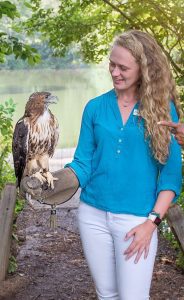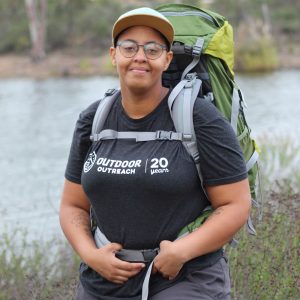Outdoor Foundation and Winnebago Industries Foundation Support Communities to Thrive Outside
EDEN PRAIRIE, MINNESOTA, October 6, 2020 – More kids and communities will build meaningful connections to nature through the Winnebago Industries Foundation’s partnership support to Thrive Outside, an Outdoor Foundation collective impact initiative. During the month of October, Winnebago Industries will celebrate outdoor equity partners and inspire employees, family and friends to do good deeds and GO outdoors during its GO for Good Challenge.
“Thrive Outside is designed to create healthy individuals, communities and economies by making the outdoors a habit,” said Stephanie Maez, Outdoor Foundation managing director. “Centering community leadership and voice, Thrive Outside communities ensure that all people feel a connection with nature and realize the health and mental health benefits the outdoors provide.”
Launched in 2019, Thrive Outside provides multi-year capacity building grants to diverse communities to create or strengthen partnerships between existing local organizations such as schools, Boys and Girls Clubs, YMCAs and nonprofit conservation and outdoor organizations that engage kids and families in repeat and reinforcing positive outdoor experiences. Atlanta, San Diego, Oklahoma City and Grand Rapids, Mich. are the first Thrive Outside communities, with an additional four communities activating in 2021.
“Winnebago Industries and the Winnebago Industries Foundation strive to connect people with transformative outdoor experiences. We also are strong believers in the power of people working together to strengthen the communities they call home,” said Michael Happe, Winnebago Industries President and CEO. “As our team members kickoff a month of giving and outdoor wellness, we are thrilled to announce this partnership with the Outdoor Foundation, outdoor industry colleagues and communities across the country.”
To participate in the WGO for Good Challenge simply do a good deed, engage in an outdoor adventure, and inspire your friends and family on social media with #GOforGood.
About Winnebago Industries and Winnebago Industries Foundation
Winnebago Industries, Inc. is a leading North American manufacturer of outdoor lifestyle products under the Winnebago, Grand Design, Newmar and Chris-Craft brands, which are used primarily in leisure travel and outdoor recreation activities. The Company builds quality motorhomes, travel trailers, fifth wheel products and boats. Winnebago Industries has multiple facilities in Iowa, Indiana, Minnesota and Florida. The Company’s common stock is listed on the New York Stock Exchange and traded under the symbol WGO.
The Winnebago Industries Foundation seeks to inspire new generations of outdoor enthusiasts, mobilize resources to reach people in need, and support employee volunteers to build strong communities where we work, live and explore. We focus our community investment in three impact areas: outdoors, access, and community. Learn more at https://winnebagoind.com/community.
About the Outdoor Foundation
The Outdoor Foundation, the philanthropic arm of Outdoor Industry Association, is a national 501(C)(3) nonprofit organization dedicated to getting people outside for their health, the health of communities and the health of the outdoor industry. Through community investment and groundbreaking research, the Outdoor Foundation works with many partners to get more people outside more often. Visit outdoorfoundation.org for more information.
Winnebago Industries Contact: Sam Jefson – Public Relations Specialist – 641-585-6803 – sjefson@wgo.net
Outdoor Foundation Contact: Andriana Rogers – Marketing Communications Manager – 720-629-3542 – arogers@outdoorindustry.org
.





